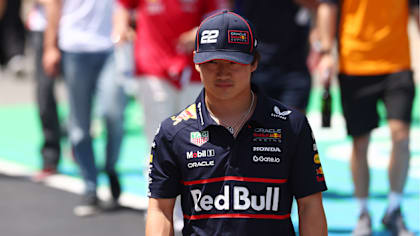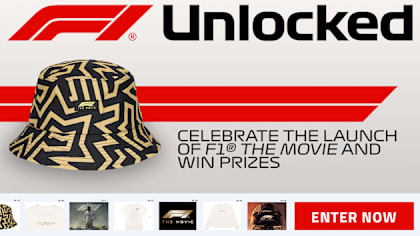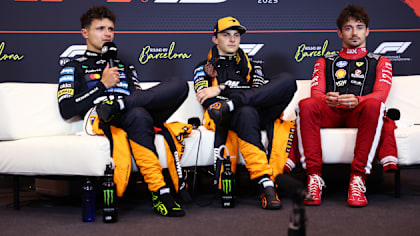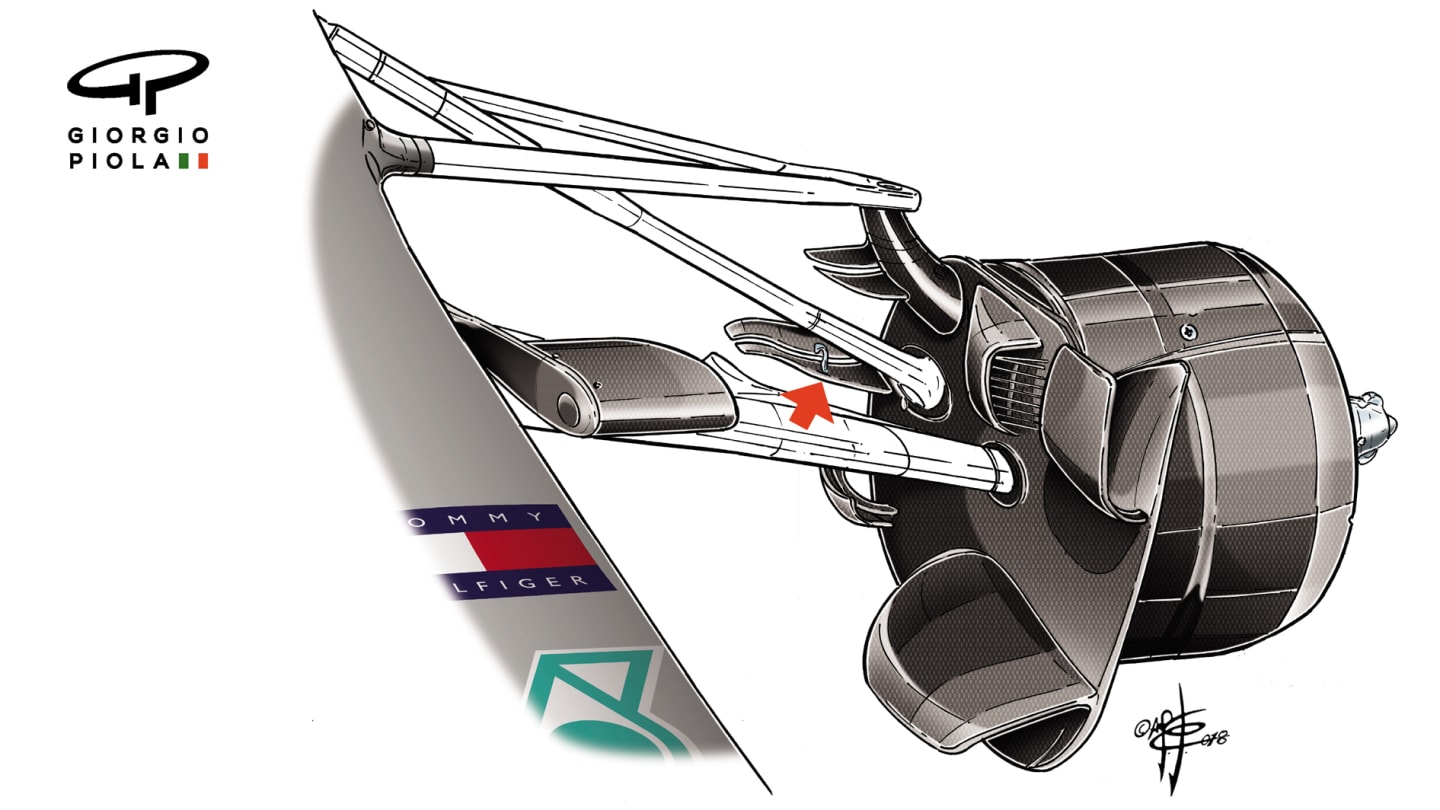
Technical
TECH TUESDAY: Why bigger wasn’t better in France
Share

Ferrari brought the most noticeable upgrade package of the front running teams to Le Castellet. But it was Mercedes, with their marginal gains, who romped to victory. Mark Hughes and Giorgio Piola map out some of the key changes seen in France, explaining why - when it comes to this year’s development race - it’s not always the biggest upgrade package that delivers the biggest boost…
The intriguing three-way battle between Mercedes, Ferrari and Red Bull this season has seen many swings in competitive order between them. These seem to correlate closely with the nature of the tracks the championship has visited and what the primary performance emphasis is of each.
The usual technical development war between the teams is still ongoing, but seems to be a second-order explanation of variation in form from one track to the next. For example, in France Ferrari for the second consecutive race introduced an extensive and very visible upgrade – on this occasion a new front wing – but the Mercedes featured only a very minor aerodynamic change (plus an upgraded engine, with Ferrari having introduced its power unit upgrade one race earlier).
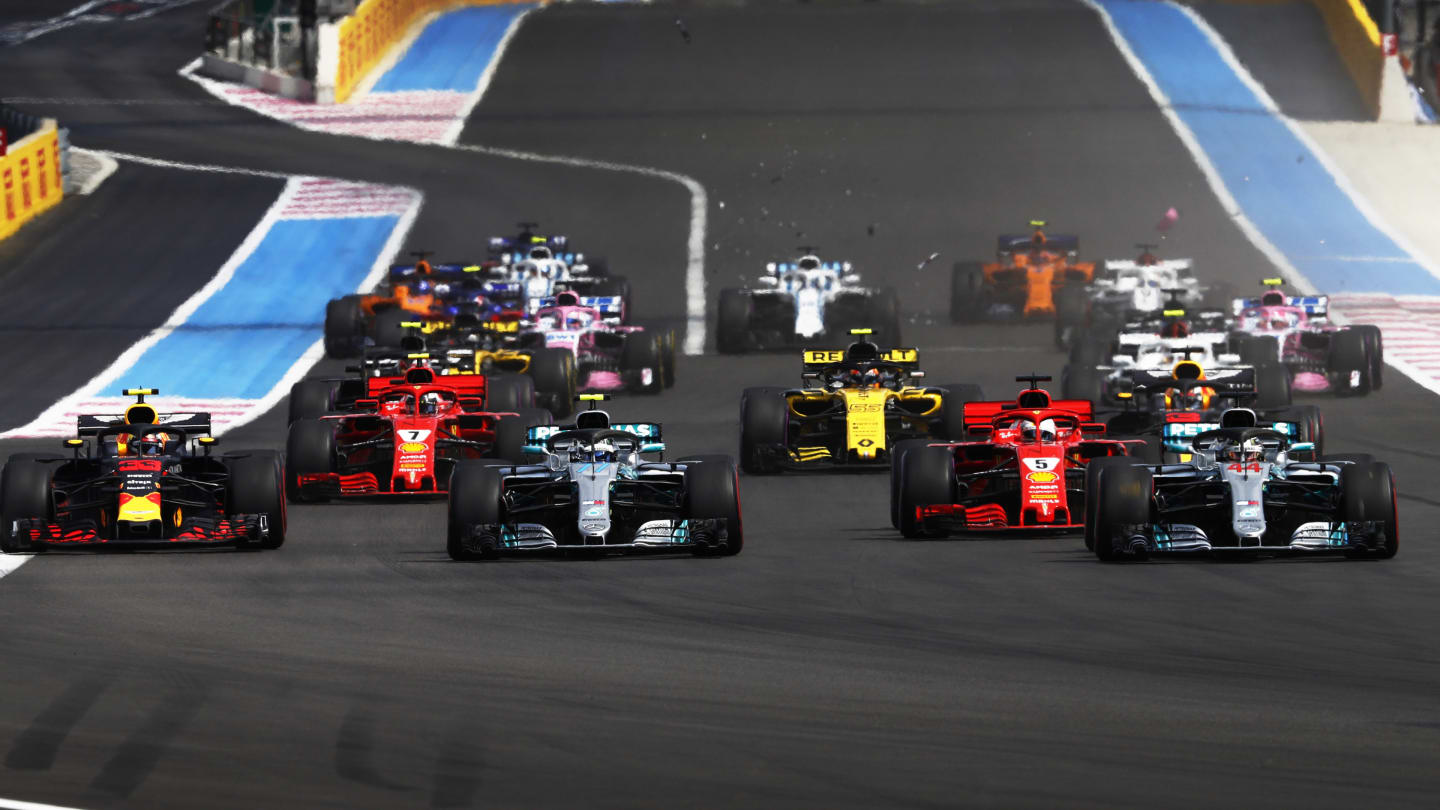
Yet it was Mercedes who completely turned around their trouncing by Ferrari in Montreal two weeks ago. The long Mistral straight meant that aerodynamic efficiency (which can be expressed as how much drag is induced for a given level of downforce) is more heavily rewarded with lap time than at most other tracks - and aerodynamic efficiency is a particular strength of the Mercedes W09.
The Mercedes that was 0.1s slower than the Ferrari at Montreal qualified 0.6s faster than the Ferrari at Paul Ricard, despite the Ferrari’s upgrade. In Austria we can expect a very significant aero upgrade for the Mercedes. In this way it can be seen how the development cycles of the team weave in and out of synch with each other, but without necessarily any correlation in form.
Mercedes' marginal gains

© Giorgio Piola
For Paul Ricard the Mercedes got only the smallest aerodynamic tweak, with an additional guide vane upon the front suspension (indicated by the red arrow), further aligning the airflow being swept upward from the bigger vane on the brake duct below as it makes its way through the interruption of the suspension on its way to feed the barge boards and radiator inlets. It will probably have only a tiny effect, but any aero improvement will be pursued relentlessly in the championship fight.
Ferrari front wing
Ferrari introduced a new front wing in France (seen below, with previous versions inset). The main flap area (the red-painted section between endplates and nose) reverted to last year’s arrangement of five main slots rather than the four-and-a-half that have been used so far this year. To achieve this, the main lower flap has been split back into two. The version used so far this year had a single lower flap but with a small mini-slot cut into a limited part of its width.
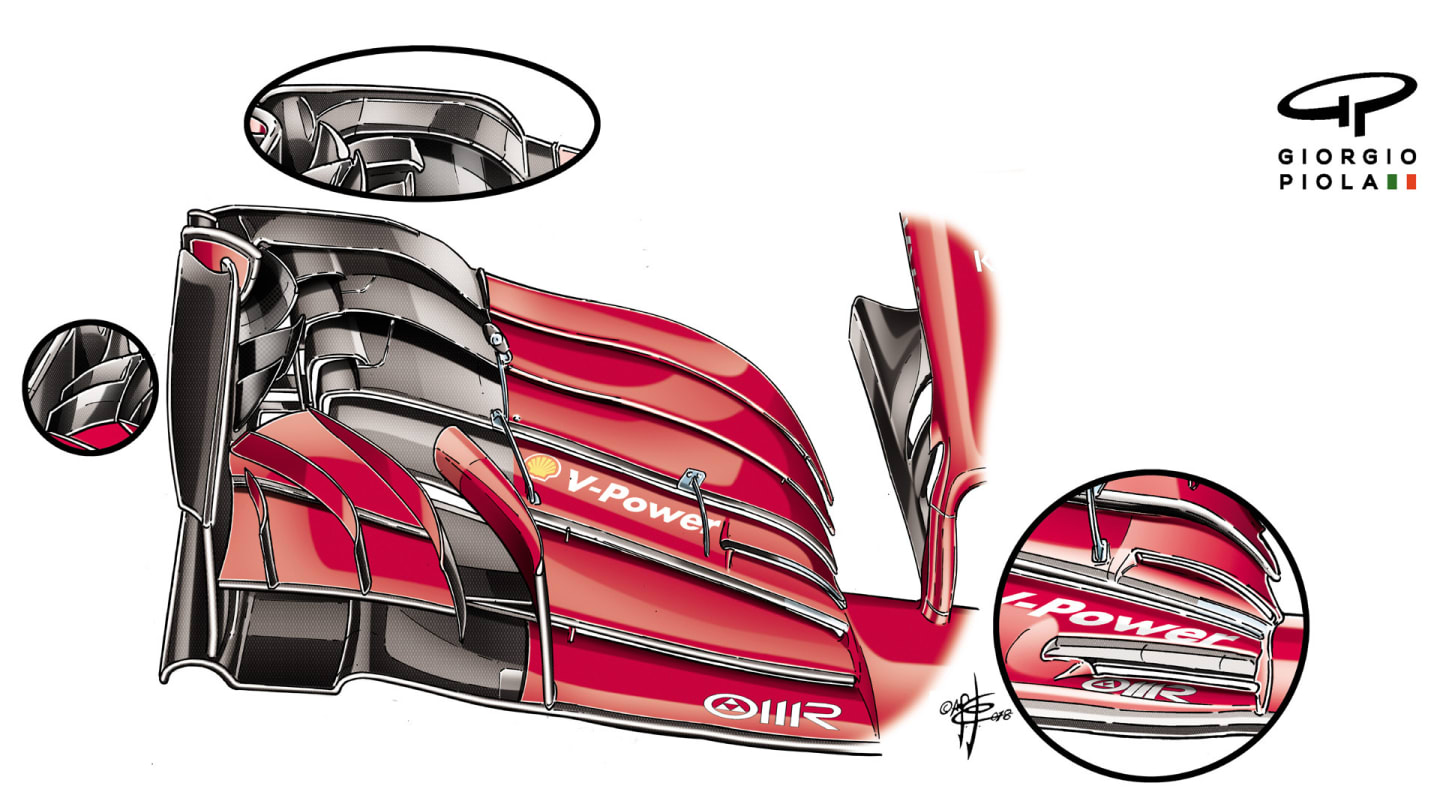
Ferrari's front wing in France featured a revised flap and endplate arrangement. © Giorgio Piola
Slots in general help keep the airflow attached to the under-surface of the flap and even though a slot by definition steals surface area available for the flap, it works the flap harder by keeping the flow attached.
There will always be a crossover point at which the gains from the greater surface area of flap are more than obliterated by the greater airflow detachment the lack of slot induces. This crossover point will vary according to ride height, pitch, car speed etc and the fact that Ferrari have gone from one arrangement to another and then back again just underlines how sensitive this crossover point is. Forthcoming races will show whether the wing introduced here is a development part or circuit-specific.
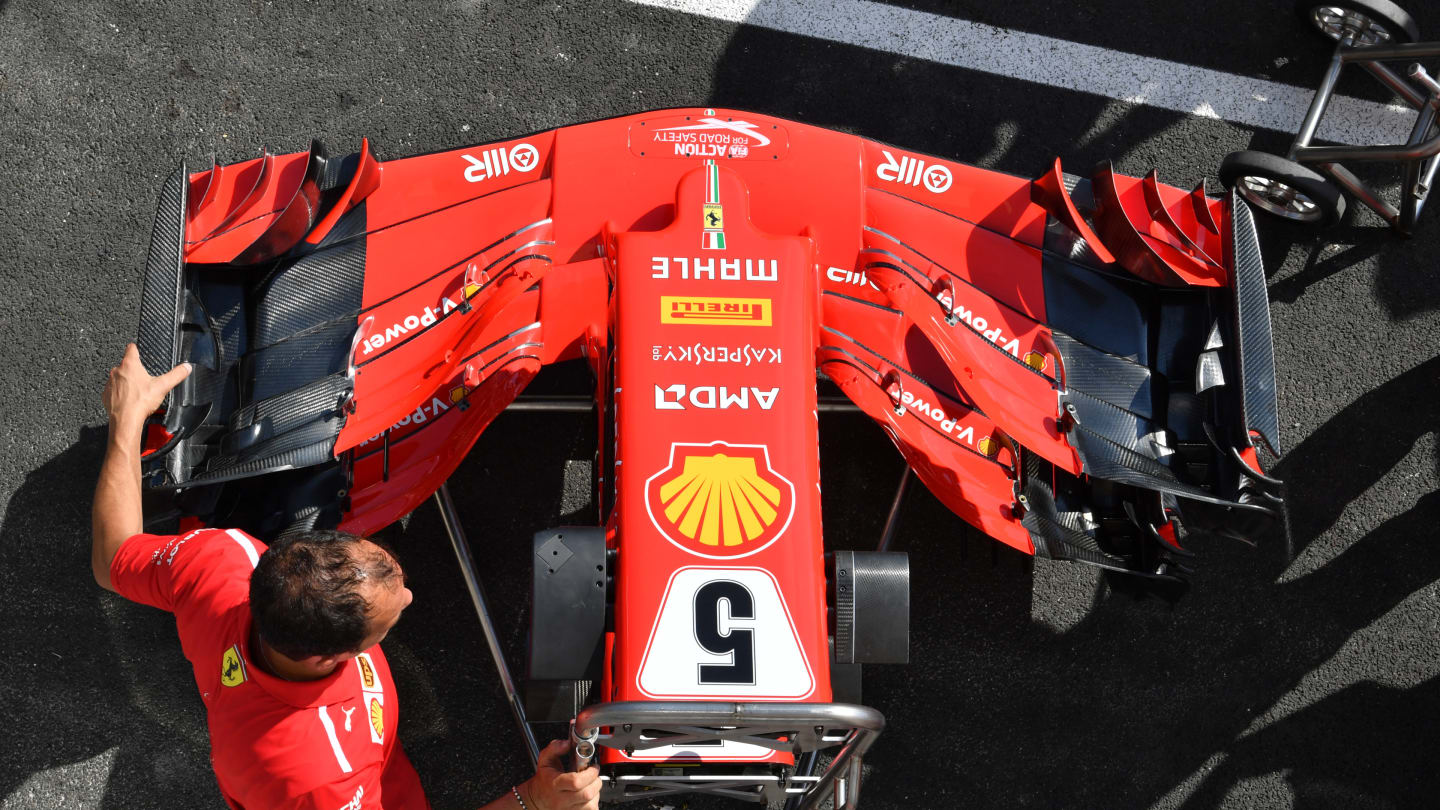
Ferrari's French wing arrangement, as seen from above. © Sutton Images
The endplate has been much more extensively changed. This part of the wing is used to turn the flow around the front wheel with the minimum of drag losses and at the same time using the various slots to create vortices (circular spinning currents of air) ahead of the sidepods, which then interact with the vortex created from the transition between the main flap area and the central neutral section beneath the nose.
These vortices are counter-rotating with a small gap between them. Airflow is sucked through the gap between these counter-rotating vortices, increasing its speed and therefore the downforce created.
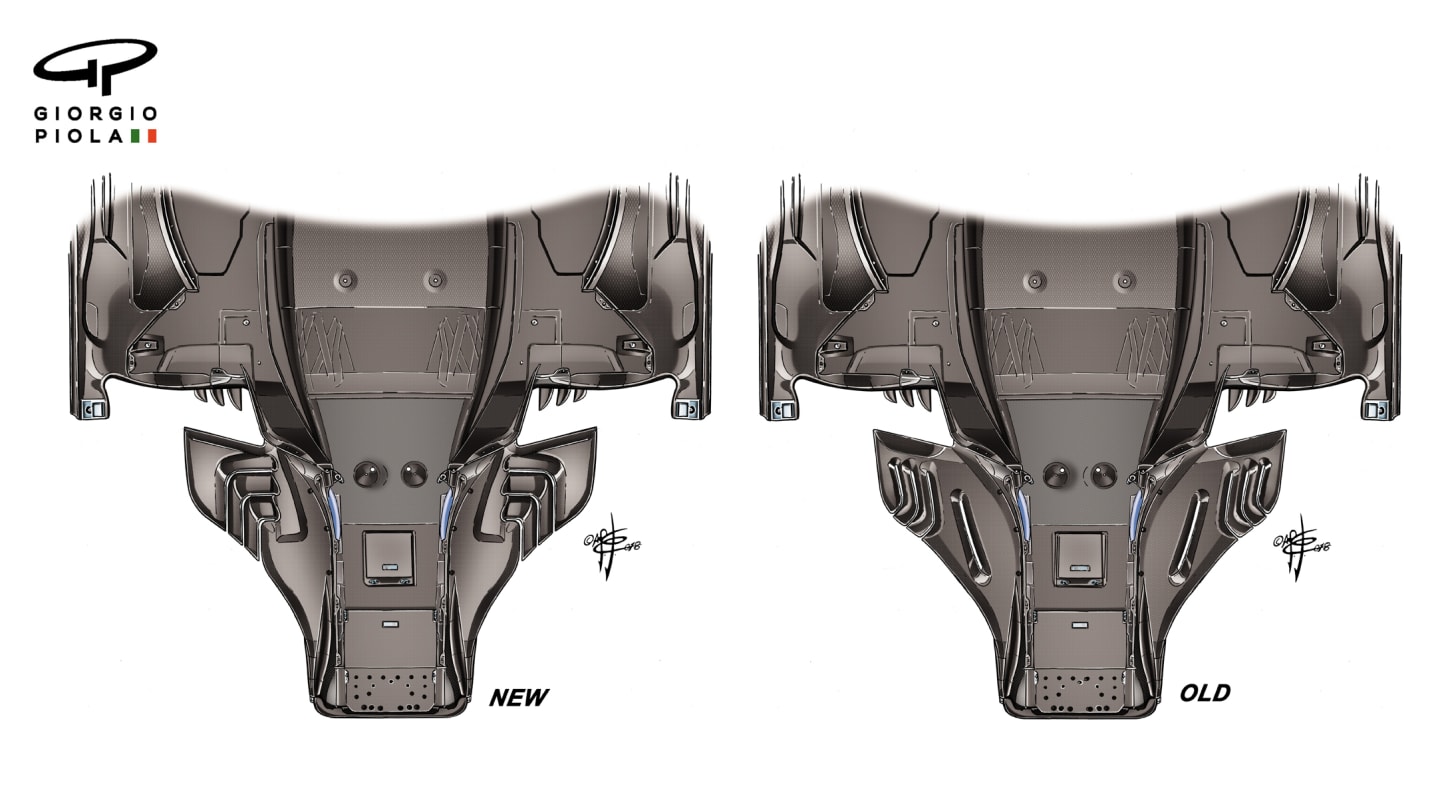
Ferrari's new floor (left) contrasted with their old arrangement (right). Note the change in slots on the mini board to the sides. These help create more downforce. © Giorgio Piola
Further details of the new floor Ferrari introduced in Canada can be seen in the comparison above, which looks at the footplate of the barge board area from below. The changed shapes of the ‘mini-boards’ at the forward, lower edge of the assembly can be seen, as also can the deletion of the previous linear slots. This implies that the new arrangement is creating more downforce without the need for a pressure-relieving slot, implying more aerodynamic efficiency.
Renault's new nose
The heavy influence of aerodynamic efficiency around the Paul Ricard circuit with its combination of very long (albeit chicane-punctuated) Mistral straight and high-speed corners, meant that the S-ducts fitted to the 2018 cars carried even more value than normal.
These devices comprise an inlet slot near the front of the nose and an outlet on top of the nose and further back, the air flowing between the two in an S-shape. This reduces the air resistance on the underside of the nose by breaking up the slow-moving stagnant airflow, called the boundary layer, that attaches to the surface.

The path of airflow through the new S-duct on the Renault's nose. © Giorgio Piola
The air is sucked into the inlet slot and this fast-moving air being sucked inwards and upwards doesn’t allow a strong boundary layer to form. As the air exits on top of the nose at high speed, it influences the direction of the airflow coming over the top of the nose from the front, redirecting it downwards and thereby reducing lift which is created by the air flowing over the upward-sloping nose.
Renault’s nose features a double S-duct inlet, with a big opening in the front of the nose and a smaller one behind, the airflow of the pair merging internally. The rearmost of the three inlets is used for cooling electronic components.
YOU MIGHT ALSO LIKE


